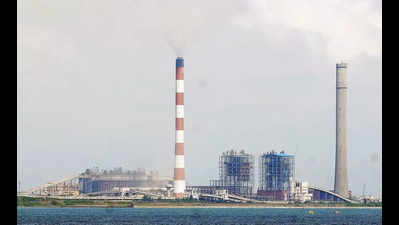Gap between power demand, supply to widen | Chennai News – The Times of India

Chennai: In view of ever-increasing demand for power, the state-owned discom, Tamil Nadu Power Distribution Corporation Ltd (TNPDCL), expects the gap between demand and supply to widen more than forecast over the next decade.
In its resource adequacy report to the Central Electricity Authority (CEA), TNPDCL said power demand projection for the state over the next 10 years is more than estimated in the 20th Electric Power Survey (EPS).
The EPS estimated Tamil Nadu’s annual power consumption in 2034-35 to be 2.5 lakh million units (it was 1.25 lakh Mu in 2023-24) and the peak power demand to touch 35,507MW.
The shortfall is estimated to be 45,587 million units. However, the discom stated that consumption and peak power demand would be higher than estimated but did not divulge the exact figures.
The all-time high peak power demand recorded in the state so far is 20,850MW, while the maximum power consumption in a day has been 454.320Mu. However, as per projections, the peak demand is likely to go beyond 36,000MW, and average daily consumption is expected to be 685Mu. Tamil Nadu will fall short by at least 126Mu every day, even if all the under-construction thermal and other renewable energy plants become operational.
Tamil Nadu currently has a total installed and contracted capacity of 36,593MW, including thermal, hydro, solar, and wind sources, apart from long-term power purchase agreements. Various thermal plants are in different stages of completion, apart from wind and solar, with pumped storage projects in the pipeline.
However, a study, done as part of the resource adequacy report, recommends an additional 7,000MW from coal plants, 5,500MW from solar plants, 5,500MW from wind sources, and 11,680MW from storage to be added to installed capacity. A senior Tangedco official said Tamil Nadu has begun work on pumped storage projects with a total capacity of 14,500MW. “We have also released a friendly solar and wind policy to augment the renewable energy quotient in the overall energy mix,” said officials.
However, K Venkatachalam, chief advisor to the Renewable Energy Producers Association (REPA), said the financial status of the state power utility is so bad that no funding institution will come forward to support its projects. “The discom seems to be more interested in purchasing power from the market, instead of augmenting the installed capacity,” he said.
















